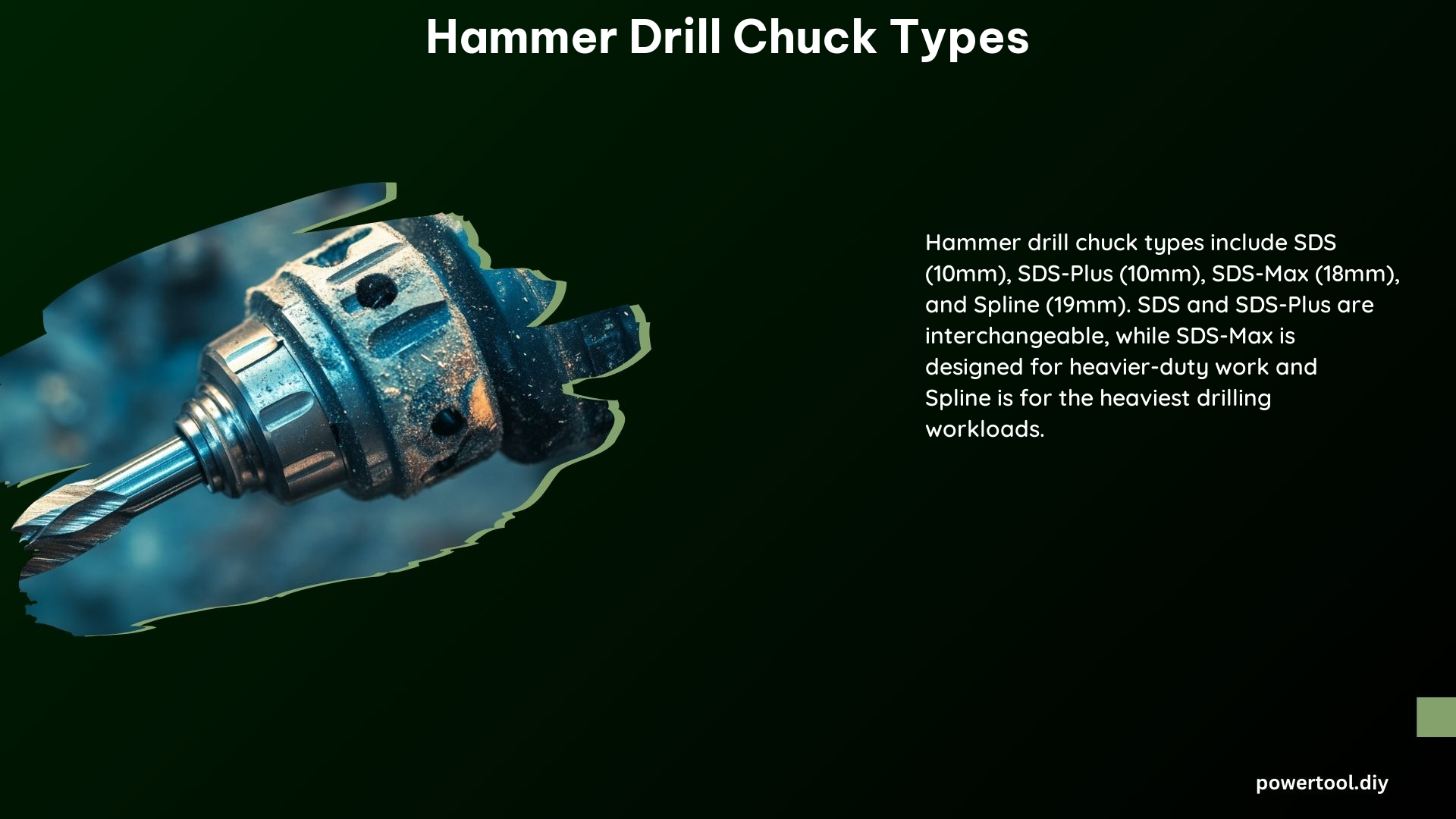Hammer drill chuck types are designed to securely hold drill bits in place while withstanding the intense pressure and pounding action of hammer drills. These specialized chucks come in various configurations, each with its own unique features and applications. In this comprehensive guide, we’ll explore the main types of hammer drill chuck systems, their key differences, technical specifications, and important considerations for their use.
Main Types of Hammer Drill Chuck Systems
1. SDS (Slotted Drive System) and SDS-Plus Chucks
- Designed for: Concrete and masonry hammering
- Shank Compatibility: SDS and SDS-Plus shanks are completely interchangeable
- Chuck Mechanism: SDS chucks have spring-loaded balls that fit into the grooves of the SDS shanks, allowing for easy one-handed bit changes
- Shank Design: SDS-Plus shanks have four indentations to keep the bit from coming loose
- Bit Size Range: Typically used with carbide drill bits ranging from 5/32″ (4 mm) to 1-1/8″ (28 mm) in diameter
2. SDS-Max Chucks
- Designed for: Heavier-duty work than SDS-Plus systems
- Shank Design: SDS Max shanks have five indentations to keep the bit from coming loose
- Bit Size Range: Typically used with carbide drill bits ranging from 1/2″ (12 mm) to 2″ (50 mm) in diameter
3. Spline Chucks
- Designed for: The heaviest drilling workloads
- Shank Design: Spline shanks have 12 “teeth” or splines that fit into the chuck and are held in place by a retaining pin
- Bit Size Range: Typically used with carbide drill bits ranging from 1/2″ (12 mm) to 2″ (50 mm) in diameter
Key Differences Between SDS, SDS-Plus, and SDS-Max Hammer Drill Chuck Systems

SDS and SDS-Plus
- Shank Compatibility: Interchangeable shanks
- Application: Designed for concrete and masonry hammering
- Shank Design: SDS-Plus shanks have four indentations for better grip
SDS-Max
- Application: Designed for heavier-duty work
- Shank Design: Shanks have five indentations for better grip
- Bit Size Range: Typically used with larger drill bits
Spline
- Application: Designed for the heaviest drilling workloads
- Shank Design: Shanks have 12 “teeth” or splines for maximum grip
Technical Specifications
SDS and SDS-Plus
- Shank Diameter: 10 mm
- Bit Size Range: Typically used with carbide drill bits ranging from 5/32″ (4 mm) to 1-1/8″ (28 mm) in diameter
SDS-Max
- Shank Diameter: 18 mm
- Bit Size Range: Typically used with carbide drill bits ranging from 1/2″ (12 mm) to 2″ (50 mm) in diameter
Spline
- Shank Diameter: 19 mm
- Bit Size Range: Typically used with carbide drill bits ranging from 1/2″ (12 mm) to 2″ (50 mm) in diameter
Using Larger Hammer Drill Bits in Smaller Chucks
It is generally not recommended to use a larger hammer drill bit in a smaller drill chuck, as this can lead to poor grip, reduced efficiency, and potential damage to the drill or bit. For example, using an SDS-Max bit in an SDS-Plus drill may not provide the necessary grip and stability, leading to reduced performance and safety risks.
Additional Information
Measuring Shank Diameter
- Use a digital caliper or micrometer to accurately measure the diameter of the shank on your drill bits.
Drill Chuck Features
- Some drill chucks, like those from Röhm, offer advanced features such as radial locking, carbide inserts, and precise concentricity for improved performance and tool grip.
Retrofitting SDS Chucks
- It may be possible to retrofit a SDS chuck onto a drill that currently has a standard 3-jaw chuck, but this would depend on the specific drill model and compatibility.
Other Chuck Types
- Keyed chucks, double-sleeve keyless chucks, and single-sleeve keyless chucks are also available for cordless screwdrivers and drills, each with their own advantages and limitations.
